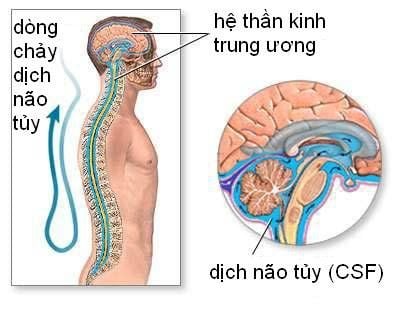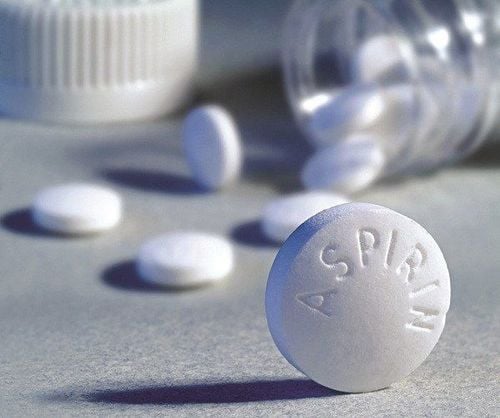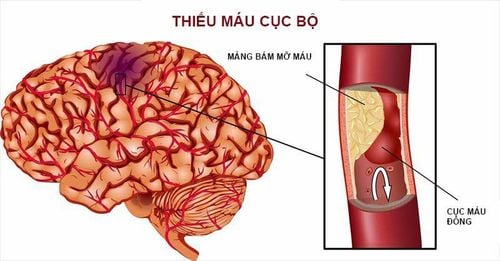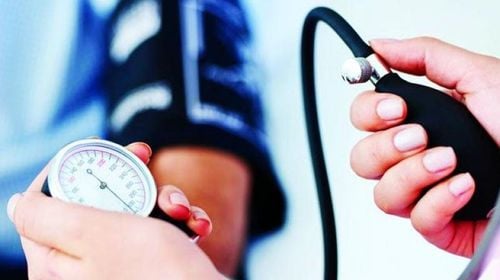This is an automatically translated article.
The article was professionally consulted by MSc Huynh An Thien - Department of Medical Examination and Internal Medicine, Vinmec International General Hospital Da Nang.
Hemorrhagic stroke is one of two types of brain stroke, it accounts for only about 20% of the total number of strokes today, but it is extremely dangerous and can even take the life of any patient. when.
1. What is a hemorrhagic stroke?
Hemorrhagic stroke is one of two types of brain stroke (the other form of cerebral stroke is ischemic stroke), occurs when a cerebral blood vessel bursts, blood suddenly invades the brain, causing damage to the brain. brain injury.
Hemorrhagic stroke is divided into 2 types, depending on the location of bleeding:
Intracerebral hemorrhage: A condition that occurs when a blood vessel in the brain bursts. Risk factors for this type of stroke include high blood pressure, alcohol consumption, and substance use. In some cases, intracerebral hemorrhage can occur due to a leaky artery malformation. An arteriovenous malformation is an abnormally weak blood vessel that is congenital in nature. When blood pressure is high, the artery malformation is stretched and can rupture, leading to a hemorrhagic stroke. Subarachnoid hemorrhage: A condition that occurs when a blood vessel on the surface of the brain bursts. Blood partially fills the space between the brain and skull, and it mixes with the cerebrospinal fluid. As blood flows into the cerebrospinal fluid, it increases pressure on the brain, causing a severe headache.
2. Symptoms of hemorrhagic stroke
Symptoms of a hemorrhagic stroke often vary, depending on the cause. With an intracerebral hemorrhage, symptoms almost always occur while the patient is awake. Symptoms of an intracerebral hemorrhagic stroke usually begin suddenly and worsen within 30 to 90 minutes. The most common symptoms can include:Sudden weakness, paralysis of any part of the body Loss of ability to speak Loss of control over eye movements Vomiting, difficulty walking, irregular breathing, dizzy, comatose

Sudden severe headache, nausea, vomiting. Loss of Consciousness Unable to look at light Stiff neck, dizziness, confusion, loss of consciousness Convulsions Hemorrhagic stroke is extremely dangerous, with a high risk of death. Many people who have had a hemorrhagic stroke do not get past 2 days from the onset of the stroke. Those who survive, the ability to recover is also very slow. Therefore, as soon as you notice the above signs, it is necessary to take the patient to the emergency room as soon as possible.
3. Diagnosis of hemorrhagic stroke
To diagnose and classify stroke, doctors need to test the patient's brain, including computed tomography (CT) or magnetic resonance imaging (MRI).
For hemorrhagic stroke, CT scan is the fastest and most effective test. If a subarachnoid hemorrhage is suspected, the doctor may do a lumbar puncture to obtain cerebrospinal fluid and check it for blood.
If these tests show that the patient has signs of a stroke, the patient will have to undergo more specialized tests to find out the cause of the stroke. Because a hemorrhagic stroke involves bleeding, it is important to evaluate the ability of the blood to clot. If the patient is taking anticoagulants, the doctor should be informed immediately to be checked. Besides, the patient may also need to have an electrocardiogram, chest X-ray, blood test,...
4. How to treat hemorrhagic stroke?
Treatment of hemorrhagic stroke includes emergency treatment and rehabilitation therapy.
Most of the emergency treatment regimens for hemorrhagic stroke include measuring and reducing intracranial pressure. Patients can be intubated and connected to a mechanical ventilator to relieve pressure in and around the brain.
In necessary cases, the doctor will have surgery to cut the skull to relieve the compression of brain tissue and remove blood clots after bleeding. After the onset of a hemorrhagic stroke, blood pressure must be closely monitored. Doctors will look at the degree of brain edema to decide which blood pressure level is appropriate.
With subarachnoid hemorrhage due to aneurysm, the patient is usually prescribed medication to prevent narrowing of the arteries as they constrict. If this bleeding is caused by an artery malformation, you may need surgery to repair or remove the malformation.
After urgent treatment, the patient needs rehabilitation treatment, including occupational therapy and physical therapy. Usually, after being hospitalized, patients will have to be treated at a rehabilitation center, which provides intensive therapies to help overcome the sequelae of brain stroke and improve health after brain injury with the goal of is to restore as much function as possible.
5. Prevention of hemorrhagic stroke
Prevention of intracerebral hemorrhage by controlling blood pressure. If the patient is taking anticoagulants, learn about their effects as they can make bleeding in the brain worse.Good control and treatment of risk diseases such as high blood pressure, high cholesterol, diabetes,... Limit alcohol consumption, stay away from tobacco and stimulants.
For subarachnoid hemorrhage due to aneurysm or arteriovenous malformation, it is practically difficult to prevent this type of stroke because the malformed blood vessels often do not show any symptoms before the bleeding occurs. . However, patients can improve their own health by building a healthy diet and living activities such as not eating a lot of salty foods, foods containing a lot of fat, needing enough sleep, limiting stress, exercise regularly.
>> See more: Nattou Ichou health food by Pharmacist, Master Pham Thi Kim Dung - Pharmacist Mixing drugs - Faculty of Pharmacy - Vinmec Times City International Hospital

Vinmec International General Hospital currently owns a 3.0 Tesla MRI system equipped with state-of-the-art equipment by GE. Healthcare (USA) with high image quality, allows comprehensive assessment, does not miss the injury but reduces the time taken to take pictures. Silent technology helps to reduce noise, create comfort and reduce stress for the client during the shooting process, resulting in better image quality and shorter imaging time. With the state-of-the-art MRI system With the application of modern methods of cerebral vascular intervention, a team of experienced and well-trained neurologists and radiologists, Vinmec is a prestigious address for stroke risk screening and screening. reliable goods.
In the past time; Vinmec has successfully treated many cases of stroke in a timely manner, leaving no sequelae: saving the life of a patient suffering from 2 consecutive strokes; Responding to foreign female tourists to escape the "death door" of a stroke;...
Please dial HOTLINE for more information or register for an appointment HERE. Download MyVinmec app to make appointments faster and to manage your bookings easily.














